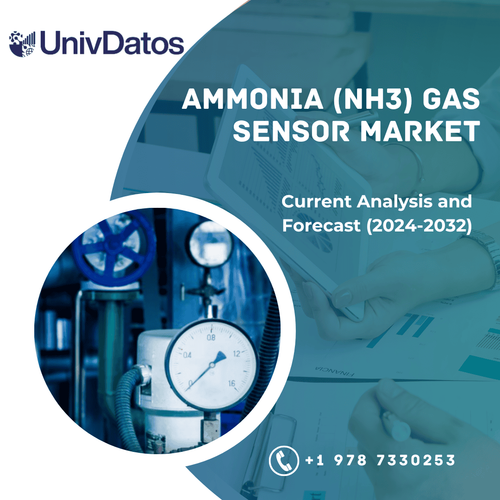North America Microgrid Market: Current Analysis and Forecast (2024-2032)
Emphasis on Component (Software and Services and Hardware); Type (AC, DC, and Hybrid); Connectivity (Grid-Connected and Off-Grid); Power Source (Combined Heat and Power, Natural Gas, Diesel, Solar PV, Fuel Cell, and Others); Storage (Lithium-ion microgrid, Lead Acid, Flow Batteries, Flywheels, and Others); Application (Healthcare, Educational Institutes, Military, Utility, Industrial/Commercial, Remote, and Others) and Region/Country
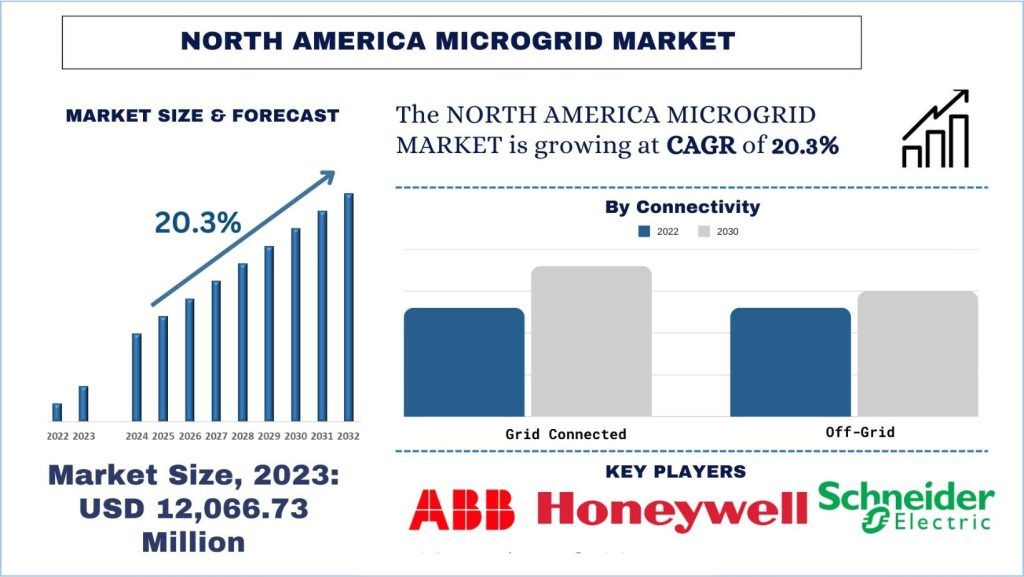
North America Microgrid Market Size & Forecast
The North America Microgrid Market was valued at USD 1,615.62 Million and is expected to grow at a strong CAGR of around 20.3% during the forecast period (2024-2032) owing to the rising demand for the clean energy from the region and the growing government support for the adoption of microgrids to provide energy in the rural areas.
North America Microgrid Market Analysis
The North America microgrid market is experiencing significant progress in the forecast period. The growing necessity to upgrade the aging infrastructure and implement off-grid electricity is driving the demand for the installation of microgrids. Additionally, the government’s focus on renewable energy and the increasing need for flexibility in microgrids, which can be connected to various power sources like solar, natural gas, hydro, etc., for electricity generation in North America, are leading to the deployment of microgrids. Moreover, governments in countries such as the United States, Canada, and Mexico are investing in microgrids to boost the proportion of renewable energy in the power generation mix and decrease greenhouse gas emissions. As a result, various initiatives like “100% renewable electricity by 2025” in Canada and the Clean Power Plan in the United States have been launched, contributing to the growing deployment of microgrids in the region. Additionally, major companies operating in the market are investing heavily in new technology and software to gain market share in the region and further develop the market in the high end. For instance, in 2022, Eaton announced the deployment of its Power Xpert Energy Optics software at the University of California, San Diego’s microgrid. The software provides real-time monitoring, analysis, and control of the microgrid’s DERs, enabling improved energy efficiency and cost savings.
North America Microgrid Market Trends
Growing Government Support
The prominent trend of government support for microgrids in North America, particularly after 2021, is a significant development aimed at promoting resilient and sustainable energy systems. Microgrids are localized energy systems that can operate independently from the main grid, integrating various distributed energy resources such as renewable energy sources, energy storage systems, and controllable loads. They offer enhanced reliability, resilience, and potential cost savings by reducing reliance on the traditional centralized grid. Government support for microgrids has been gaining momentum in North America, driven by factors such as the need for reliable and resilient energy infrastructure, the transition towards cleaner energy sources, and the potential economic benefits of local energy production.
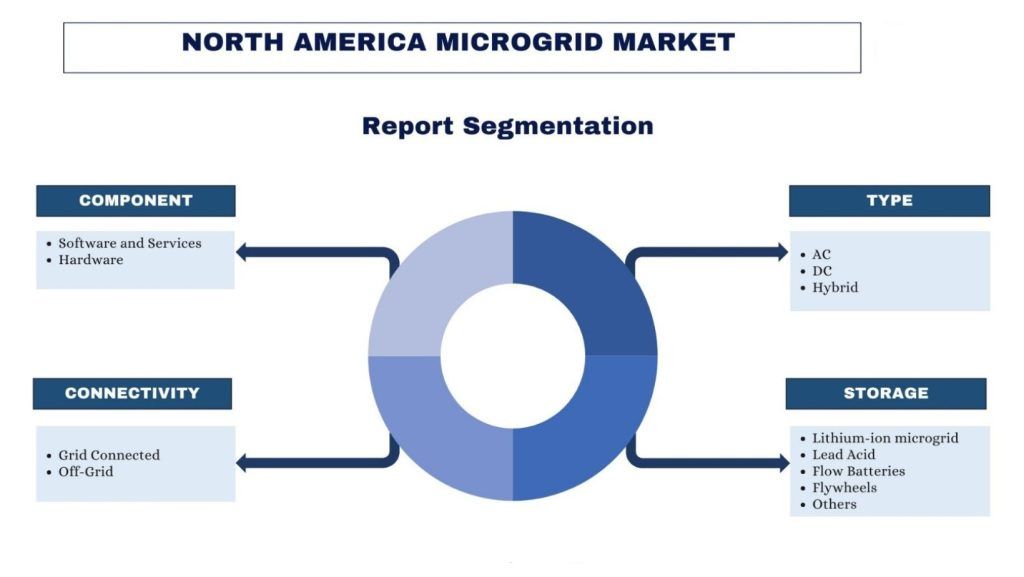
- In 2021, the Bipartisan Infrastructure Law (BIL) signed by President Biden in November 2021. This law includes provisions for microgrids and resilient energy systems, allocating $8 billion for grid resilience and reliability. A portion of this funding is specifically dedicated to supporting microgrid projects, with a focus on critical infrastructure, low-income communities, and areas prone to natural disasters.
- Another notable development is the Inflation Reduction Act (IRA), signed into law in August 2022, which provides tax credits and incentives for renewable energy projects, including microgrids. The IRA extends and expands the Investment Tax Credit (ITC) and Production Tax Credit (PTC) for renewable energy sources, making it more financially viable to integrate these resources into microgrid systems.
- In June 2023, Kirtland Air Force Base (KAFB) is taking another step on its energy resilience journey with the announcement of a new direct current (DC) microgrid project. The US Air Force Research Laboratory (AFRL) recently awarded a USD 4.8 million contract to Concurrent Technologies Corporation (CTC) to develop and implement DC microgrid technologies on the base.
North America Dominated the North America Microgrid Market
Within North America, the United States holds a major share of the market. The major factors boosting the market’s growth in the market are the growing demand for clean energy in the region along with the heavy investment made by the government and private players from industry. Additionally, the technological advances in the microgrid sector have moved forward the market in the foreseeable future.
The North America microgrid market valued at 1,2,066.73 million in 2023 and is expected to reach 59,697.13 million at a CAGR of 20.3%. The growing necessity to upgrade the aging infrastructure and implement off-grid electricity is driving the demand for the installation of microgrids. Additionally, the government’s focus on renewable energy and the increasing need for flexibility in microgrids, which can be connected to various power sources like solar, natural gas, hydro, etc., for electricity generation in North America, are leading to the deployment of microgrids. Moreover, governments in countries such as the United States, Canada, and Mexico are investing in microgrids to boost the proportion of renewable energy in the power generation mix and decrease greenhouse gas emissions. As a result, various initiatives like “100% renewable electricity by 2025” in Canada and the Clean Power Plan in the United States have been launched, contributing to the growing deployment of microgrids in the region.
North America Microgrid Industry Overview
The microgrid market is competitive as well as concentrated, with the presence of very few north America and international market players. The key players are adopting different growth strategies to enhance their market presence, such as partnerships, agreements, collaborations, new product launches, geographical expansions, and mergers and acquisitions. Some of the major players operating in the market are ABB, General Electric, Siemens AG, Eaton Corporation Inc., Schneider Electric SE, Honeywell International Inc., Caterpillar, Toshiba Corporation, Hitachi Energy Ltd, General Microgrids.
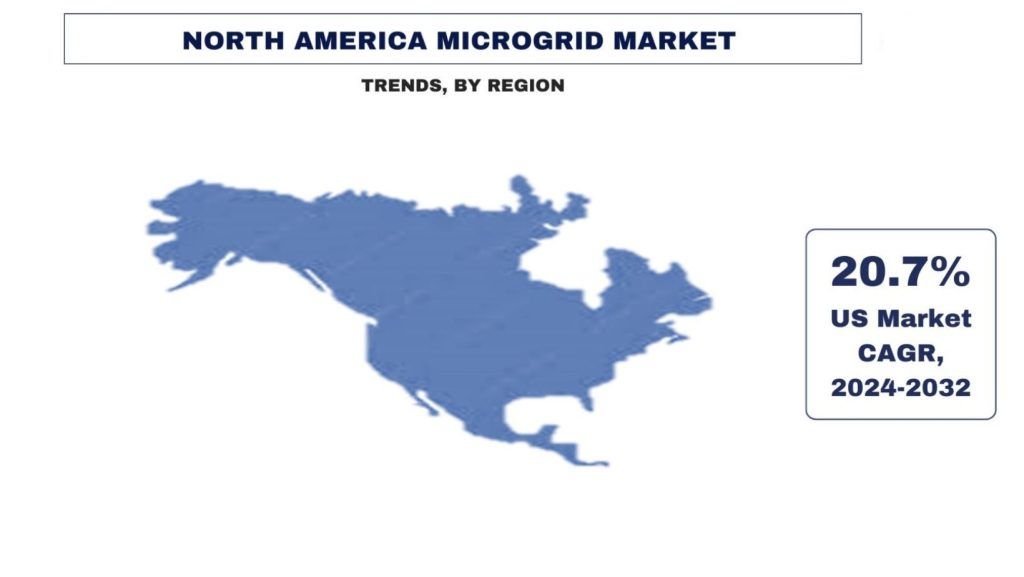
North America Microgrid Market News
- In 2024, Wisconsin Health System Partners with Utility on Renewable Microgrid. The microgrid will control a new battery energy storage system (BESS) to be installed by Xcel as well as the campus’ existing solar panels. Renewable energy generated from biogas by the La Crosse County Landfill will also be connected to the microgrid.
- In 2023, The Grid Resilience and Innovation Partnerships (GRIP) programme was announced by US Secretary of Energy Jennifer Granholm and White House Infrastructure Implementation Coordinator Mitch Landrieu. A USD 10.5 billion program to “strengthen grid resilience and reliability” across the US includes funding for microgrids and other projects that will integrate battery storage technologies.
- In 2022, Chakratec, a company develops and markets its kinetic energy storage systems and is targeting markets in the US and Europe with its newly raised fund of USD 30 million aimed at supporting ultra-fast charging for electric vehicles (EVs).
North America Microgrid Market Report Coverage
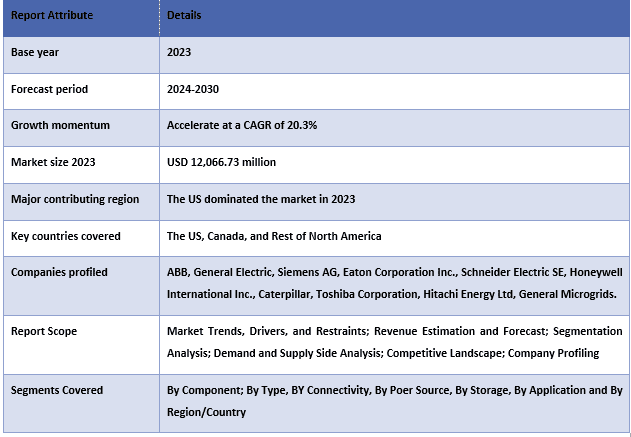
Reasons to buy this report:
- The study includes market sizing and forecasting analysis validated by authenticated key industry experts.
- The report presents a quick review of overall industry performance at one glance.
- The report covers an in-depth analysis of prominent industry peers with a primary focus on key business financials, product portfolios, expansion strategies, and recent developments.
- Detailed examination of drivers, restraints, key trends, and opportunities prevailing in the industry.
- The study comprehensively covers the market across different segments.
- Deep dive regional level analysis of the industry.
Customization Options:
The North America microgrid market can further be customized as per the requirement or any other market segment. Besides this, UMI understands that you may have your own business needs, hence feel free to contact us to get a report that completely suits your requirements.
Table of Contents
Research Methodology for the North America Microgrid Market Analysis (2024-2032)
Analyzing the historical market, estimating the current market, and forecasting the future market of the North America microgrid market were the three major steps undertaken to create and analyze the adoption of microgrid in major countries. Exhaustive secondary research was conducted to collect the historical market numbers and estimate the current market size. Secondly, to validate these insights, numerous findings and assumptions were taken into consideration. Moreover, exhaustive primary interviews were also conducted, with industry experts across the value chain of the North America microgrid market. Post assumption and validation of market numbers through primary interviews, we employed a top-down/bottom-up approach to forecasting the complete market size. Thereafter, market breakdown and data triangulation methods were adopted to estimate and analyze the market size of segments and sub-segments of the industry pertains to. Detailed methodology is explained below:
Analysis of Historical Market Size
Step 1: In-Depth Study of Secondary Sources:
Detail secondary study was conducted to obtain the historical market size of the microgrid market through company internal sources such as annual reports & financial statements, performance presentations, press releases, etc., and external sources including journals, news & articles, government publications, competitor publications, sector reports, third-party database, and other credible publications.
Step 2: Market Segmentation:
After obtaining the historical market size of the microgrid market, we conducted a detailed secondary analysis to gather historical market insights and share for different segments & sub-segments for major regions. Major segments are included in the report component, connectivity, type, power source, storage, and application. Further country-level analyses were conducted to evaluate the overall adoption of testing models in that region.
Step 3: Factor Analysis:
After acquiring the historical market size of different segments and sub-segments, we conducted a detailed factor analysis to estimate the current market size of the microgrid market. Further, we conducted factor analysis using dependent and independent variables such as component, connectivity, type, power source, storage, and application of the microgrid market. A thorough analysis was conducted for demand and supply-side scenarios considering top partnerships, mergers and acquisitions, business expansion, and product launches in the microgrid market sector across the globe.
Current Market Size Estimate & Forecast
Current Market Sizing: Based on actionable insights from the above 3 steps, we arrived at the current market size, key players in the North America microgrid market, and market shares of the segments. All the required percentage shares split, and market breakdowns were determined using the above-mentioned secondary approach and were verified through primary interviews.
Estimation & Forecasting: For market estimation and forecast, weights were assigned to different factors including drivers & trends, restraints, and opportunities available for the stakeholders. After analyzing these factors, relevant forecasting techniques i.e., the top-down/bottom-up approach were applied to arrive at the market forecast for 2032 for different segments and sub-segments across the major markets North America. The research methodology adopted to estimate the market size encompasses:
- The industry’s market size, in terms of revenue (USD) and the adoption rate of the microgrid market across the major markets domestically
- All percentage shares, splits, and breakdowns of market segments and sub-segments
- Key players in the North America microgrid market in terms of products offered. Also, the growth strategies adopted by these players to compete in the fast-growing market.
Market Size and Share Validation
Primary Research: In-depth interviews were conducted with the Key Opinion Leaders (KOLs) including Top Level Executives (CXO/VPs, Sales Head, Marketing Head, Operational Head, Regional Head, Country Head, etc.) across major regions. Primary research findings were then summarized, and statistical analysis was performed to prove the stated hypothesis. Inputs from primary research were consolidated with secondary findings, hence turning information into actionable insights.
Split of Primary Participants in Different Regions
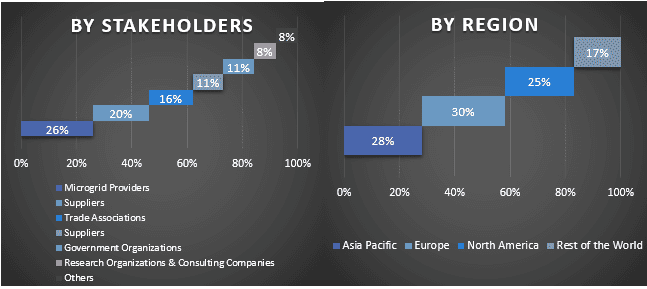
Market Engineering
The data triangulation technique was employed to complete the overall market estimation and to arrive at precise statistical numbers for each segment and sub-segment of the North America microgrid market. data was split into several segments & sub-segments post studying various parameters and trends in the areas of the component, connectivity, type, power source, storage, and application in the North America microgrid market.
The main objective of the Global North America Microgrid Market Study
The current & future market trends of the North America microgrid market were pinpointed in the study. Investors can gain strategic insights to base their discretion for investments on the qualitative and quantitative analysis performed in the study. Current and future market trends determined the overall attractiveness of the market at a regional level, providing a platform for the industrial participant to exploit the untapped market to benefit from a first-mover advantage. Other quantitative goals of the studies include:
- Analyze the current and forecast market size of the microgrid market in terms of value (USD). Also, analyze the current and forecast market size of different segments and sub-segments.
- Segments in the study include areas of the component, connectivity, type, power source, storage, and application.
- Define and analysis of the regulatory framework for the microgrid
- Analyze the value chain involved with the presence of various intermediaries, along with analyzing customer and competitor behaviors of the industry.
- Analyze the current and forecast market size of the microgrid market for the major region.
- Major countries of regions studied in the report include the United States, Canada, and Rest of North America.
- Company profiles of the microgrid market and the growth strategies adopted by the market players to sustain in the fast-growing market.
- Deep dive regional level analysis of the industry
Frequently Asked Questions FAQs
Q1: What is the current market size and growth potential of the North America Microgrid market?
Q2: What are the driving factors for the growth of the microgrid market?
Q3: Which segment has the largest share of the microgrid market by type?
Q4: What are the emerging technologies and trends in the microgrid market?
Q5: Which country will dominate the microgrid market?
Related Reports
Customers who bought this item also bought





